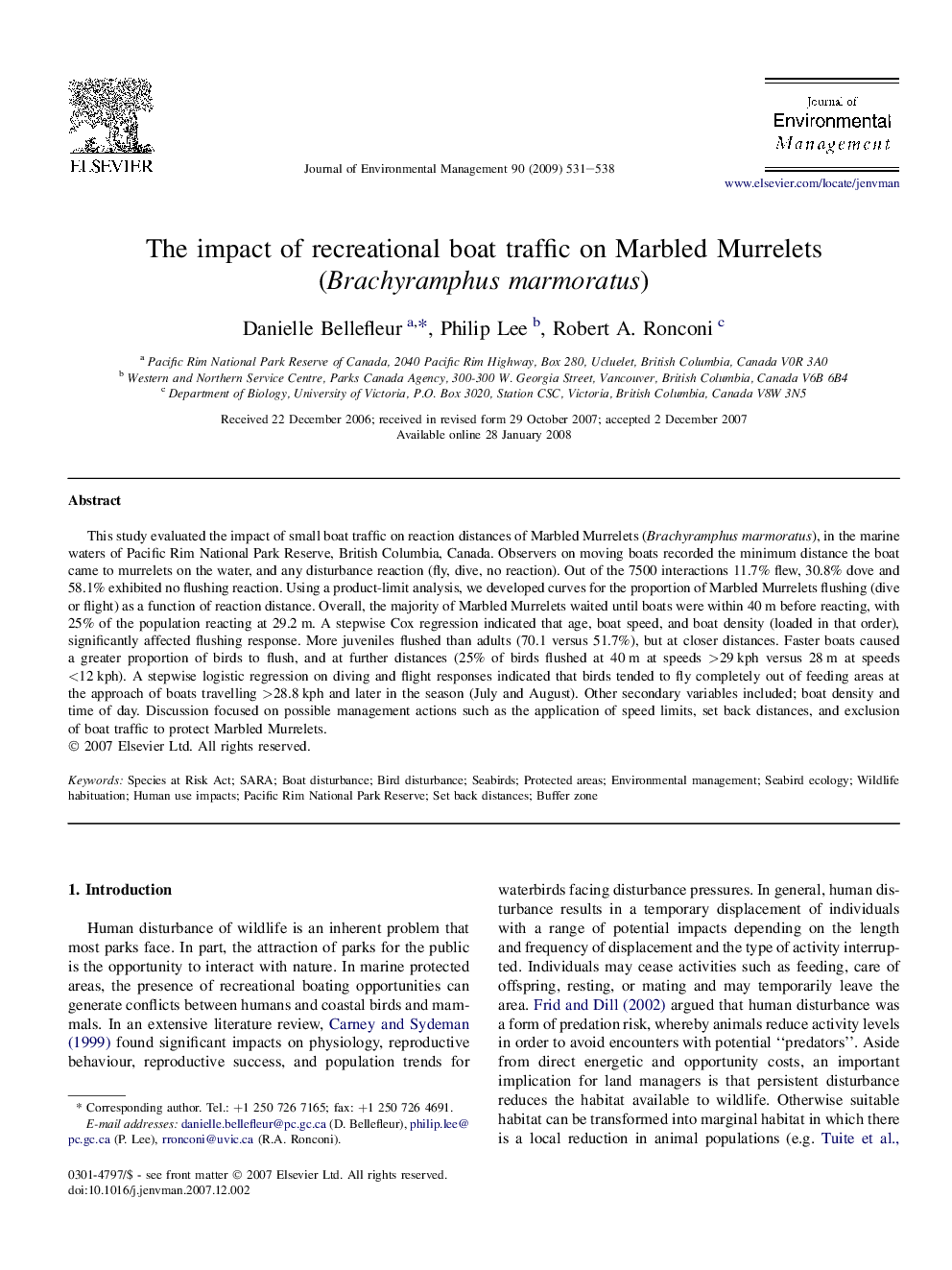| Article ID | Journal | Published Year | Pages | File Type |
|---|---|---|---|---|
| 1058121 | Journal of Environmental Management | 2009 | 8 Pages |
This study evaluated the impact of small boat traffic on reaction distances of Marbled Murrelets (Brachyramphus marmoratus), in the marine waters of Pacific Rim National Park Reserve, British Columbia, Canada. Observers on moving boats recorded the minimum distance the boat came to murrelets on the water, and any disturbance reaction (fly, dive, no reaction). Out of the 7500 interactions 11.7% flew, 30.8% dove and 58.1% exhibited no flushing reaction. Using a product-limit analysis, we developed curves for the proportion of Marbled Murrelets flushing (dive or flight) as a function of reaction distance. Overall, the majority of Marbled Murrelets waited until boats were within 40 m before reacting, with 25% of the population reacting at 29.2 m. A stepwise Cox regression indicated that age, boat speed, and boat density (loaded in that order), significantly affected flushing response. More juveniles flushed than adults (70.1 versus 51.7%), but at closer distances. Faster boats caused a greater proportion of birds to flush, and at further distances (25% of birds flushed at 40 m at speeds >29 kph versus 28 m at speeds <12 kph). A stepwise logistic regression on diving and flight responses indicated that birds tended to fly completely out of feeding areas at the approach of boats travelling >28.8 kph and later in the season (July and August). Other secondary variables included; boat density and time of day. Discussion focused on possible management actions such as the application of speed limits, set back distances, and exclusion of boat traffic to protect Marbled Murrelets.
